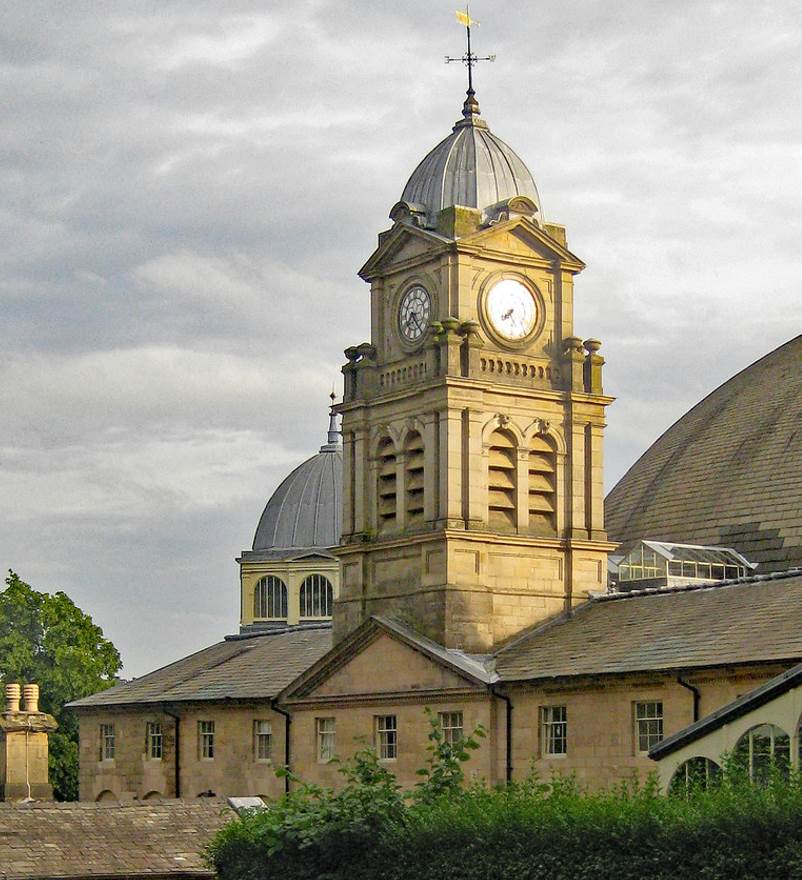A Spa town in the East Midlands in England is home to one of the most fascinating domes in the world. This remarkable building has served quite some purposes as well.
In this article, you’ll discover some of the most interesting facts about the Devonshire Dome, one of the architectural highlights in the country.
1. It’s located in a market town in Derbyshire
The Devonshire Dome is a huge domes structure in the market town of Buxton in Derbyshire. This town is located in a hilly area and is considered to be the highest market town in England with an elevation of 300 meters (1,000 feet) above sea level.
The Peak District National Park lies to its northeast, an amazing piece of nature that covers an area of 1,440 square kilometers (555 square miles). The peak District features the “Mam Thor,” the highest hill in the area at an elevation of 517 meters (1,696 feet) above sea level.
The town is relatively small but features multiple tourist attractions, including a limestone cave called Poole’s Cavern and a thermal spring called the Buxton Baths.
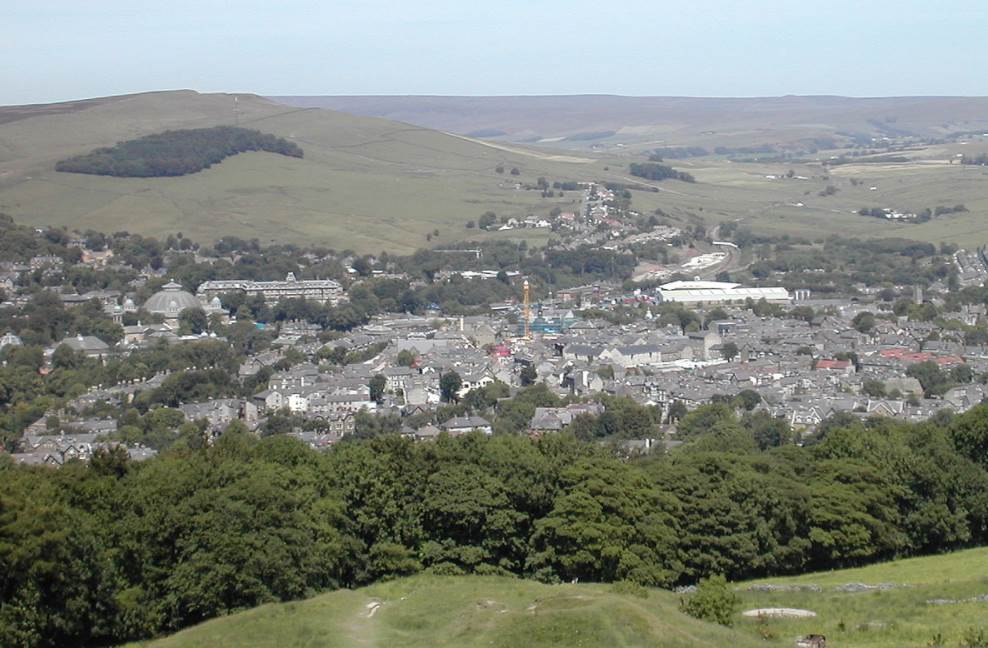
2. It was constructed in the 18th century and served as a stable block
The building was named after the man who first commissioned it, William Cavendish, 5th Duke of Devonshire (1748-1811). He hired York-based architect John Carr (1723-1807), a man who traditionally worked in the Palladian style.
The influence of Renaissance buildings is apparent in the design of the original building which was constructed to serve as a stable block for the duke’s horses.
The building was completed between 1780 and 1789 and octagonal in design. It was able to house up to 120 horses and also features quarters for the duke’s servants.
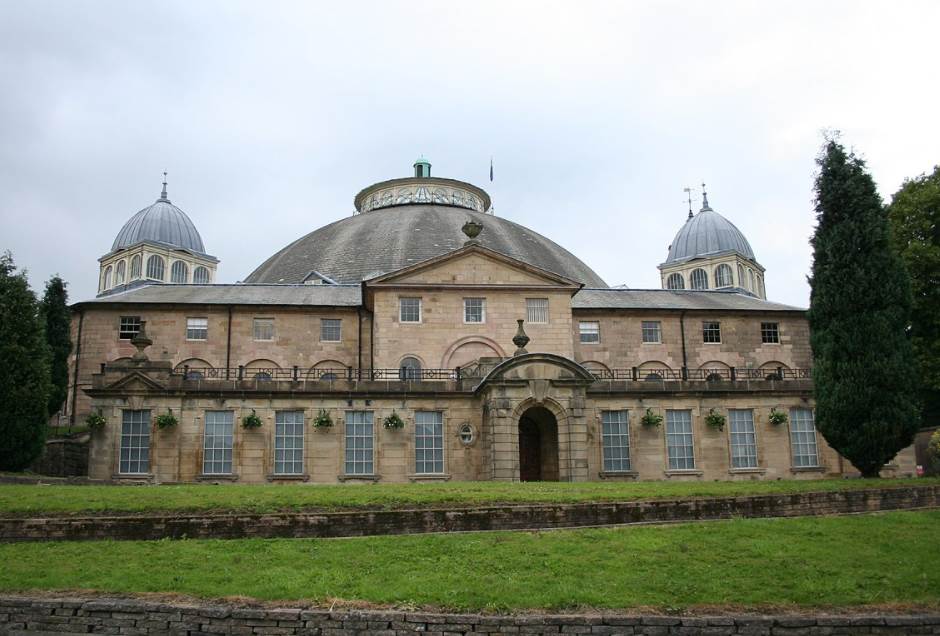
3. Part of the structure was turned into a hospital in the 1850s
Until the early 21st century, the building was known as the Devonshire Royal Hospital. That’s because it served this purpose from 1859 onward, although the building was only named this way in 1934.
By the 1850s, there were no more horses stabled here so a local charity managed to persuade the Duke of Devonshire to transform part of the building into a charity hospital.
English architect Henry Currey, a man who spent a lot of time working at the Devonshire estate, redeveloped two-thirds of the building so it could serve as a hospital.
Currey was also the architect of the Victorian version of St. Thomas Hospital in Lambeth, London, and multiple buildings in Buxton, including the Buxton Thermal Baths.
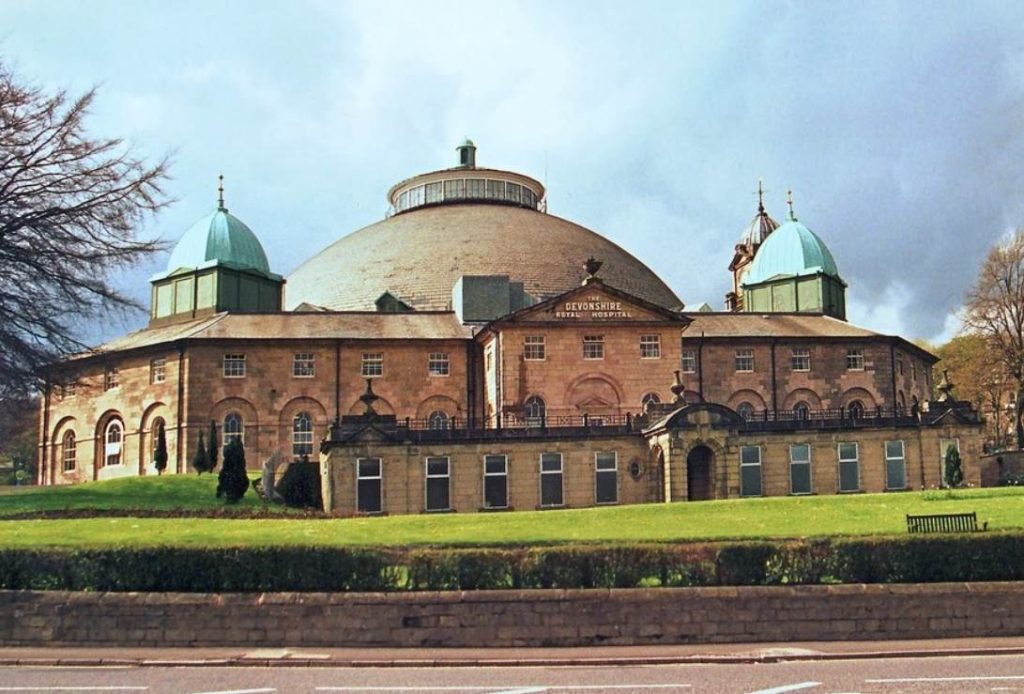
4. The dome held a remarkable record upon completion in 1881
The renovation project in the 1850s didn’t feature the fascinating dome for which the dome has become famous today. This was only added later in the 19th century when the whole building was transformed into a hospital.
The Buxton Bath Charity trustees who managed the hospital managed to persuade the 7th Duke of Devonshire to redevelop the building into a 300-bed hospital. It became one of the largest in the area upon completion.
A local architect named Robert Rippon Duke (1817-1909) was hired and he integrated the largest unsupported dome in the world into the structure.
The dome has a diameter of 44.2 meters (145 feet) which makes it slightly bigger than that of the Pantheon (43 meters/141 feet) and St. Peter’s Basilica (42 meters/138 feet) in Rome, and a lot bigger than the dome of St. Paul’s Cathedral (34 meters/112 feet) in London.
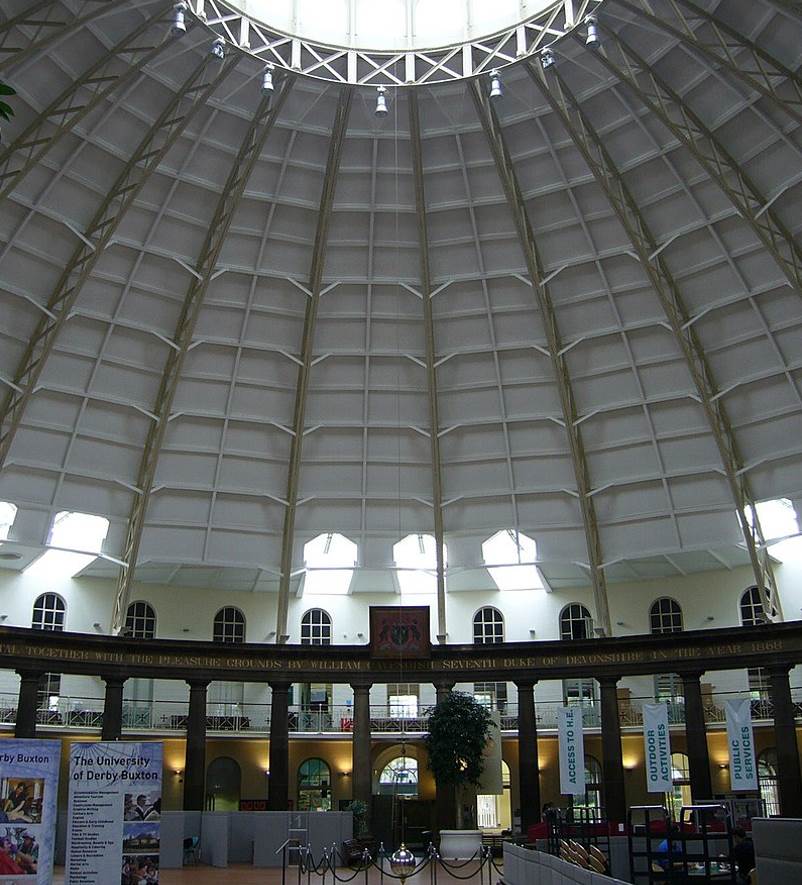
5. The building was renovated once more int he early 21st century
The hospital was expanded several times throughout its history and featured surgical wards (1897), spa baths (1913), and a kitchen and dining room (1921).
It finally closed its doors in 2000 and was the last of the 8 hydropathic hospitals to close in England. The building wasn’t neglected and changed its purpose once again.
A renovation project that cost £4.7 million was completed between 2001 and 2003 and since then, the Devonshire Dome has been used as a college campus of the University of Derby.
The building can also be rented for special events such as weddings and meetings.
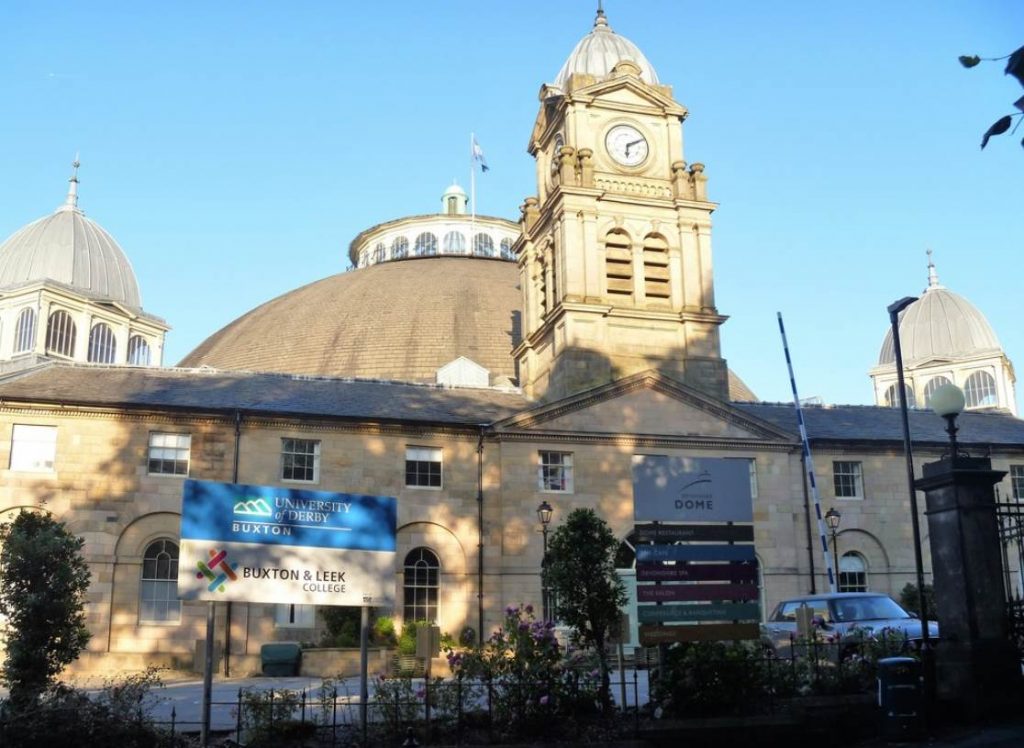
More interesting facts about the Devonshire Dome
6. The Devonshire Dome isn’t the only fascinating building in Buxton. Just to the southeast of the building, you can find the Buxton Crescent, a historic Grade-I-listed building that was completed between 1780 and 1789, the same time as the dome.
This amazing building was designed in typical Georgian architecture and was transformed into a 5-star spa hotel after a renovation project that was completed in 2020.
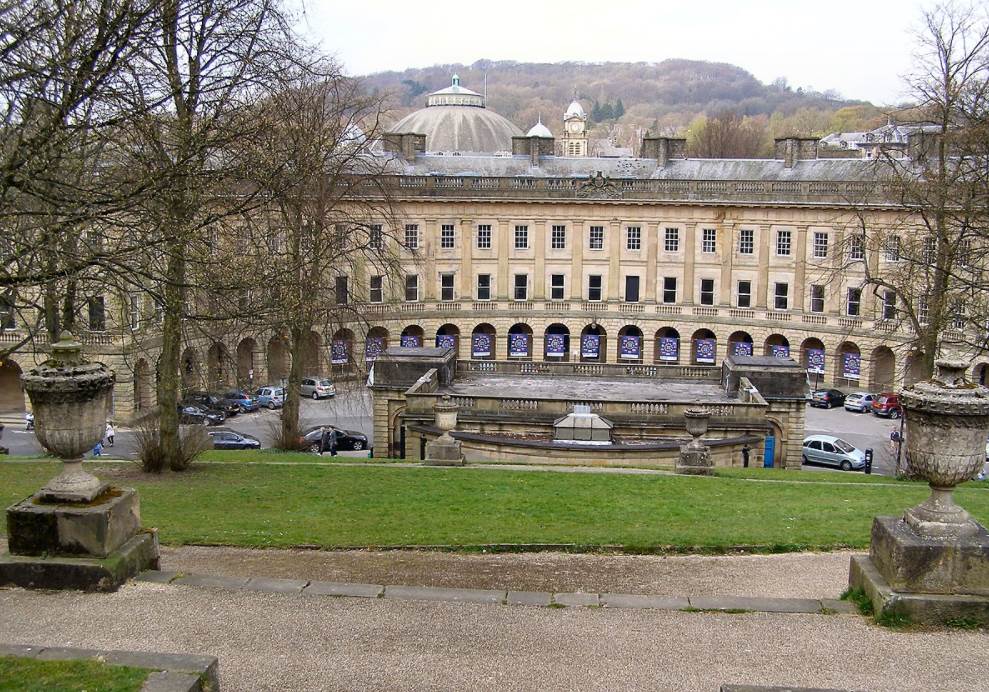
7. Architect John Carr was inspired by Italian architect Andrea Palladio (1508-1580) but he was also inspired by a famous building in Spain. The interior collonades closely resemble those of the Palace of Charles V at the Alhambra in Granada in southern Spain.
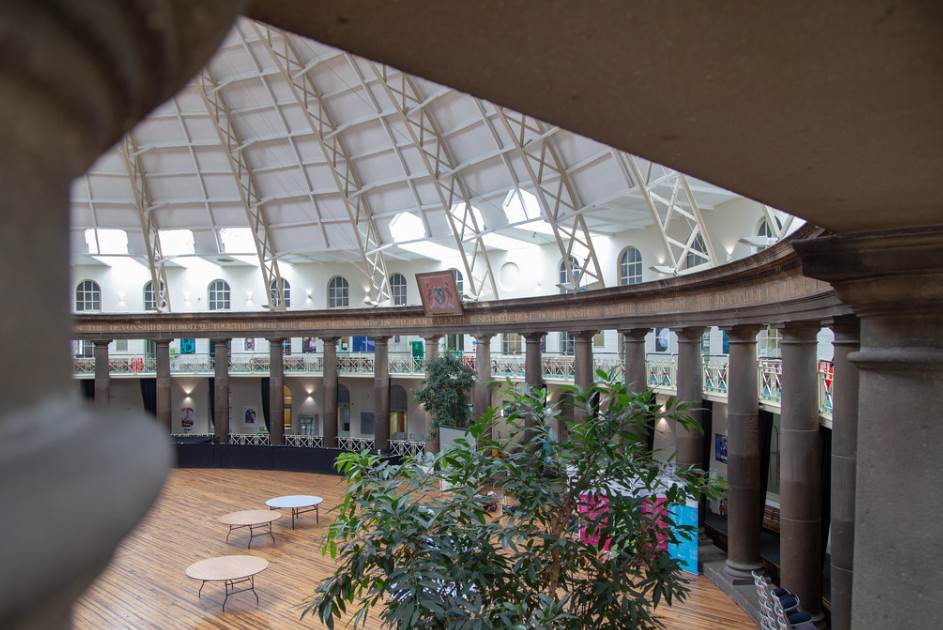
8. The architect of the hospital in the 1850s was Henry Currey, a man who was also the architect of the Victorian version of St. Thomas Hospital in Lambeth, London, and multiple buildings in Buxton, including the Buxton Thermal Baths.
9. The building featured the largest unsupported dome in the world for about 2 decades. It was only surpassed by the West Baden Springs Hotel in Indiana in 1902. This dome has a diameter of 59.45 meters (195 feet).
10. Many domes are larger today because of the invention of space frame domes, a truss-like and lightweight variation of the dome constructed in Buxton. It remains the largest unsupported dome in the UK today.
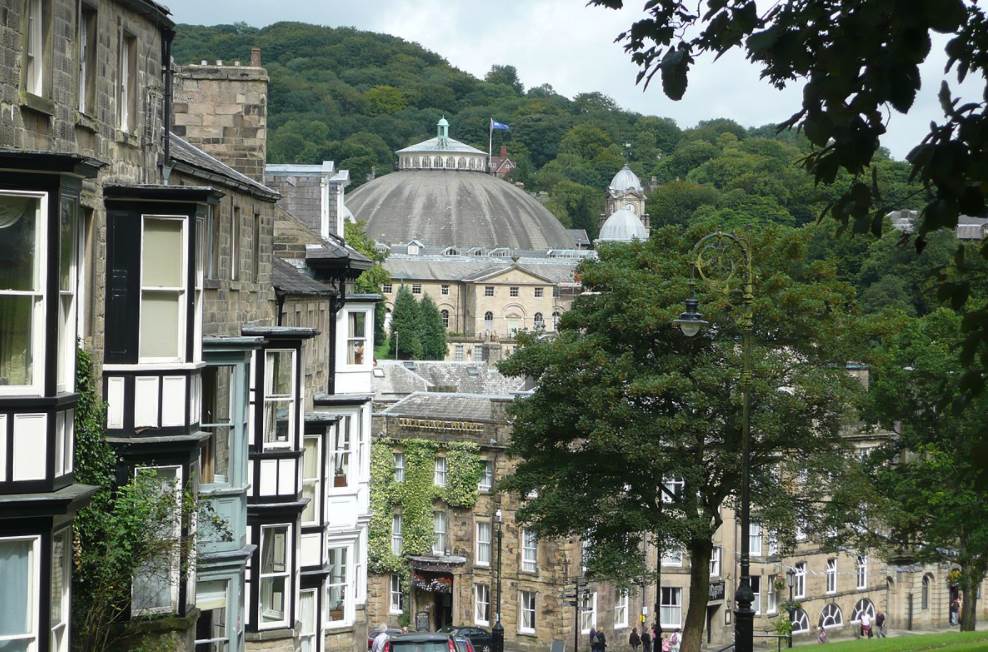
11. The interior of the building looks immense and that’s because the dome covers a total area of 1,534 square meters (16,510 square feet).
12. The clock tower of the building was constructed shortly after the dome was completed in 1882. This tower was constructed in honor of the lead physician and the hospital’s chairman, Dr. William Henry Robertson (1810-1897).
He was one of the leading figures in the development of Buxton as a spa town.
